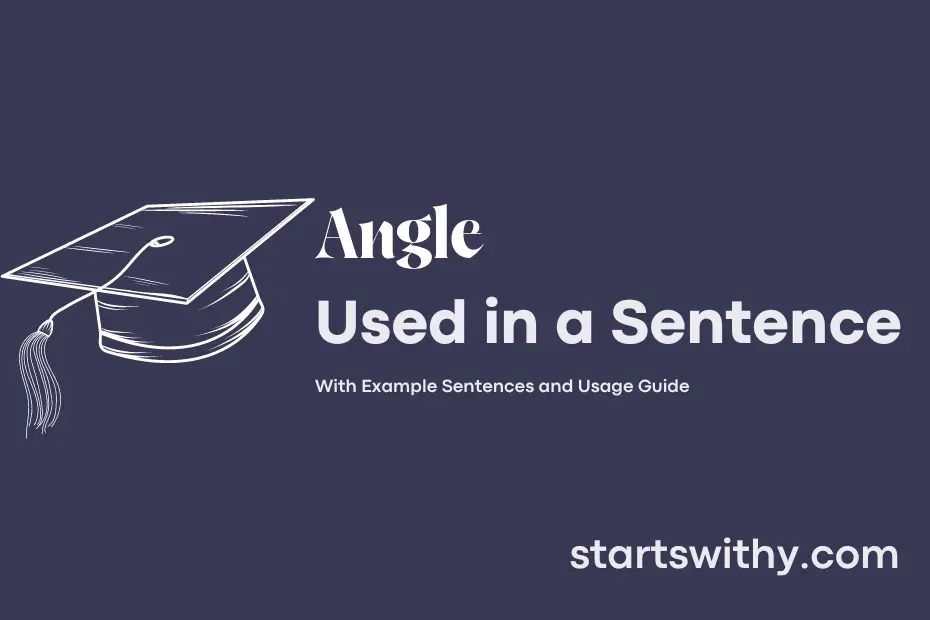Do you struggle with understanding how to use the word “angle” in a sentence? Let’s explore its meaning and various ways it can be incorporated into your writing.
An “angle” refers to the viewpoint or perspective from which something is observed, considered, or presented. When used in a sentence, this term can help convey the unique approach or interpretation of a particular subject or situation.
7 Examples Of Angle Used In a Sentence For Kids
- The angle of the rainbow was so pretty.
- Can you find the angle of your folded paper?
- Look at the angle of the sun in the sky.
- The bird flew at an interesting angle.
- Let’s play a game to find different angles in the room.
- Draw a picture of a star with five angles.
- I love to look at the angles of my toys and arrange them in different ways.
14 Sentences with Angle Examples
- In trigonometry, students learn how to find missing angles in a triangle.
- To solve physics problems, understanding the concept of angle of incidence is crucial.
- During chemistry experiments, it is essential to measure the angle of a chemical bond accurately.
- Students studying architecture must consider the angle of inclination when designing a building.
- When playing sports like cricket or baseball, knowing the correct angle to hit the ball is important.
- In photography classes, students are taught how to frame a shot using different angles.
- Understanding the concept of angles is key to mastering geometry in mathematics.
- In computer science, programmers use algorithms to calculate the optimal angle for data visualization.
- Angles are used in art classes to create perspective and depth in drawings.
- In astronomy, students study the angles of celestial bodies to predict their movements.
- When conducting psychology experiments, researchers often consider the angle of perception in their studies.
- Students studying economics analyze various angles of a business model to determine its success.
- In fashion design, students learn how to drape fabric at different angles to create unique garments.
- Angles play a crucial role in understanding the principles of balance and symmetry in interior design.
How To Use Angle in Sentences?
Angle can be used in a sentence as a noun to describe the direction or perspective from which something is viewed. Here is a helpful guide on how to use “Angle” in a sentence for beginners:
When angle is used as a noun, it refers to the space between two intersecting lines or surfaces. For example, “The carpenter measured the angle of the roof to ensure it was symmetrical.”
Another way to use angle is to describe a specific perspective or point of view. For instance, “From her angle, she could see the entire city skyline.”
Additionally, angle can be used to describe the way in which something is presented or approached. For example, “The journalist decided to take a different angle on the story to provide a fresh perspective.”
To make your sentences more descriptive and engaging, try incorporating angle to add depth and dimension to your writing. Experiment with different contexts and scenarios to understand how angle can enhance your communication.
Remember, angle is a versatile word that can add richness and clarity to your sentences. Practice using it in various contexts to become more comfortable incorporating it into your everyday writing.
Conclusion
In essence, the examples of sentences with the keyword “angle” highlight its versatility in describing geometric figures and perspectives. From determining the measurements of angles in a triangle to discussing the tilt of a camera lens, “angle” is crucial for conveying the relationships and orientations between objects. These sentences also showcase how “angle” can be used figuratively, such as in expressing a viewpoint or approach to a problem.
Overall, sentences with the keyword “angle” demonstrate its significance in both mathematical contexts and everyday language. By exploring angles in various situations, we can better understand the concept’s importance in shaping our perception of space, relationships, and differing viewpoints.



